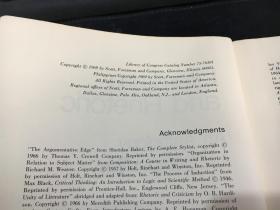Tone and Literature: A Detailed Exploration
Have you ever wondered how the tone of a literary work can shape your reading experience? The tone, in literature, is the author’s attitude towards the subject matter, which can range from serious and solemn to humorous and light-hearted. In this article, we will delve into the various dimensions of tone in literature, exploring its impact on the reader and the author’s message. Let’s embark on this literary journey together.
Understanding Tone

The tone of a literary work is the emotional atmosphere it creates. It is the author’s voice, conveyed through the characters, setting, and language. To understand tone, consider the following aspects:
- Emotional Tone: This refers to the emotions evoked by the work, such as joy, sadness, fear, or anger.
- Verbal Tone: This is the author’s choice of words and phrases, which can be formal, informal, colloquial, or poetic.
- Attitudinal Tone: This reflects the author’s attitude towards the subject matter, which can be critical, appreciative, or indifferent.
Understanding these aspects will help you analyze the tone of a literary work more effectively.
The Impact of Tone on the Reader

The tone of a literary work can significantly impact your reading experience. Here are some ways in which tone can influence you:
- Emotional Connection: A well-crafted tone can evoke emotions, making you feel connected to the characters and the story.
- Perspective: The tone can provide insight into the author’s perspective on the subject matter, shaping your understanding of the story.
- Engagement: A captivating tone can keep you engaged, making you eager to turn the page and continue reading.
For example, consider the tone of “To Kill a Mockingbird” by Harper Lee. The serious and solemn tone reflects the gravity of the issues at hand, making the reader empathize with the characters and the struggle for justice.
The Role of Tone in the Author’s Message

The tone of a literary work plays a crucial role in conveying the author’s message. Here’s how tone can help the author communicate their ideas:
- Emphasizing Importance: A solemn tone can emphasize the importance of the subject matter, making the reader take notice.
- Creating Contrast: By using contrasting tones, the author can highlight the differences between characters or situations.
- Reflecting Reality: The tone can reflect the reality of the characters’ lives, making the story more relatable and believable.
Take, for instance, “The Great Gatsby” by F. Scott Fitzgerald. The tone of the novel, which is both humorous and tragic, reflects the author’s commentary on the American Dream and the emptiness of wealth and status.
Types of Tone in Literature
Literature features a wide range of tones, each serving a unique purpose. Here are some common types of tone:
- Humorous: This tone is light-hearted and often uses sarcasm or wit to entertain the reader.
- Serious: A serious tone is solemn and often conveys a sense of gravity or importance.
- Tragic: This tone is filled with sadness and despair, often reflecting the loss of life or love.
- Ironical: An ironic tone contrasts the reality of a situation with the expectations, often leading to a humorous or thought-provoking effect.
Below is a table showcasing the tone of some famous literary works:
| Literary Work | Tone |
|---|---|
| “Pride and Prejudice” by Jane Austen | Humorous |
| “Hamlet” by William Shakespeare | Serious |
| “The Great Gatsby” by F. Scott Fitzgerald | Ironical |




